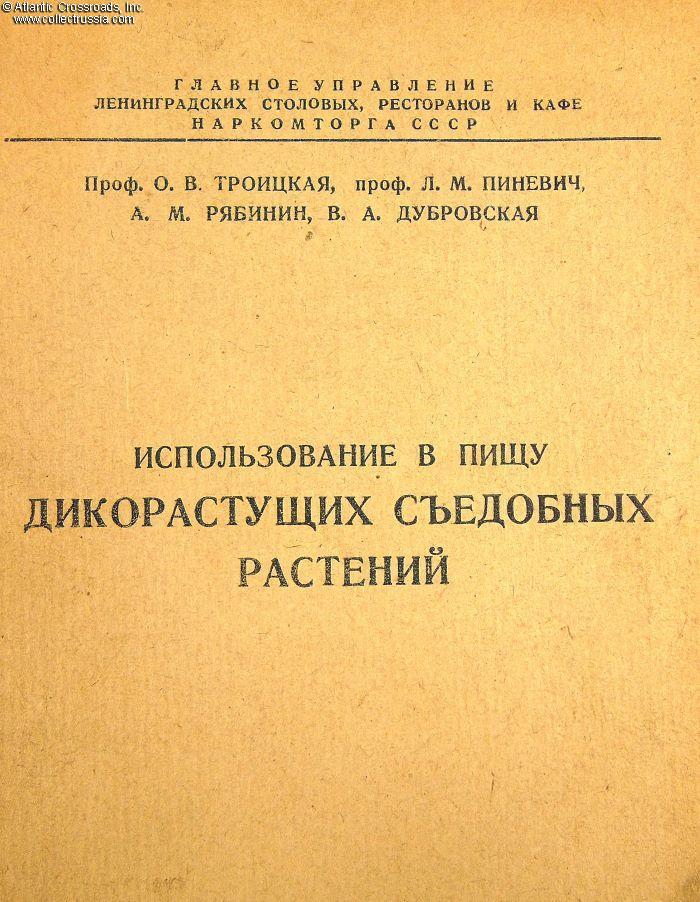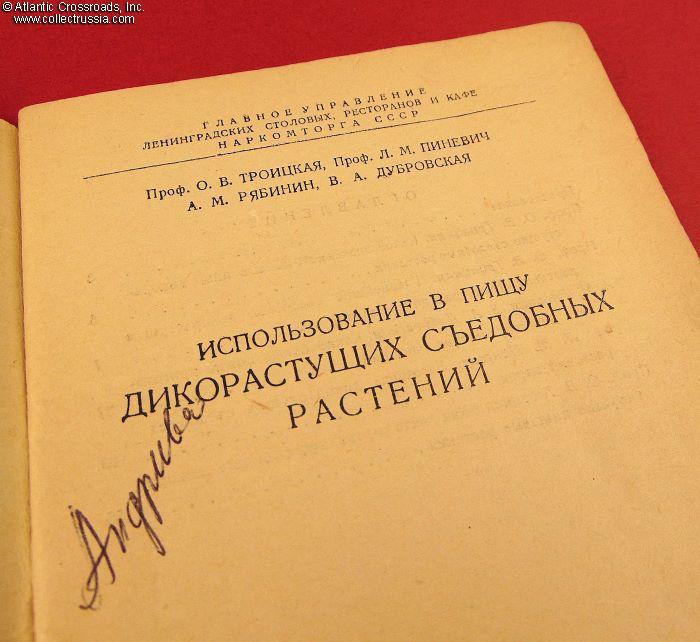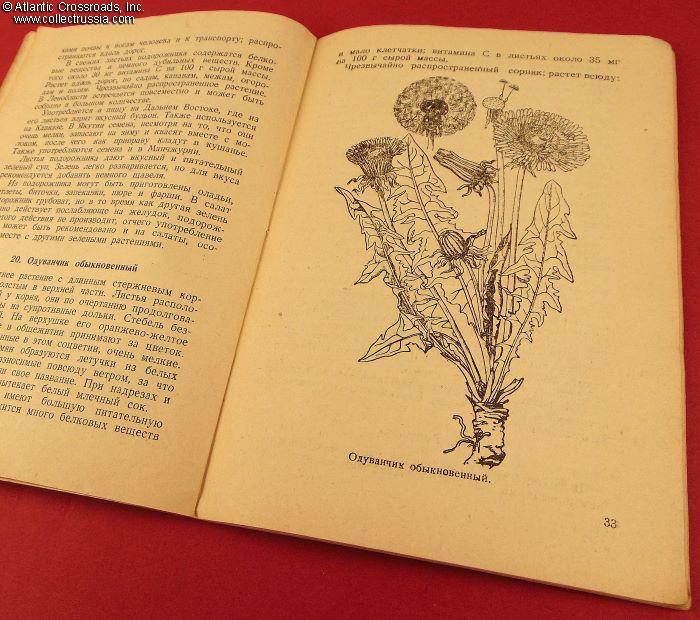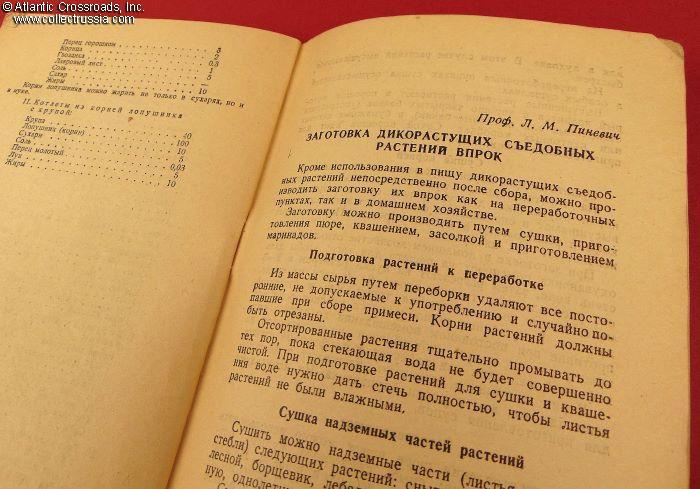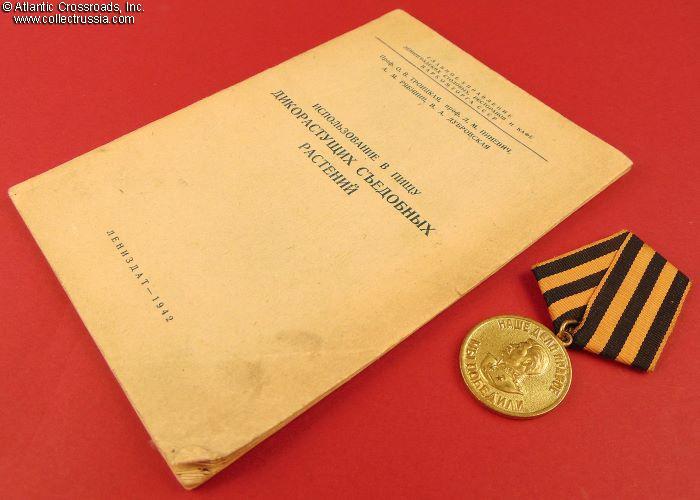
Leningrad Blockade Booklet Use of Wild Edible Plants as Food, 1942.
Measures 5" x 7 ¼", paperback, 56 pp. Compiled by the Chief Directorate of Leningrad Diners, Restaurants, and Cafes under People's Commissariat of Trade of the USSR; Published by LENIZDAT (Russian acronym for Leningrad Publishing House), circulation unknown.
In very good condition, showing minor soiling to the cover and insignificant corner bumps and creases, not reaching the text. The binding staple is tight and not rusted. The paper is mildly age-toned. The text is bright, clear, and perfectly legible throughout the book.
This book was approved for publication on 29 June 1
Measures 5" x 7 ¼", paperback, 56 pp. Compiled by the Chief Directorate of Leningrad Diners, Restaurants, and Cafes under People's Commissariat of Trade of the USSR; Published by LENIZDAT (Russian acronym for Leningrad Publishing House), circulation unknown.
In very good condition, showing minor soiling to the cover and insignificant corner bumps and creases, not reaching the text. The binding staple is tight and not rusted. The paper is mildly age-toned. The text is bright, clear, and perfectly legible throughout the book.
This book was approved for publication on 29 June 1942, almost ten months after Leningrad had been blockaded, after surviving the very severe first blockade winter. Starvation was becoming the norm, and the city government had to become creative in helping the population to survive.
The book is prefaced by an optimistic essay on the subject of edibility of wild-growing plants. And while the optimism is theoretically justified, there is probably a good reason why humans do not normally eat them.
The essay is followed by articles describing the most common plants growing in and around Leningrad, illustrated by scientific and rather schematic drawings of them, followed by a list of recipes of salads, hot and cold soups, second course dishes, and a section providing guidance on conservation of the plants for future use. The recipes do not provide specific cooking instructions, just lists of ingredients after the name of the dish. Here is an example.
Recipe #6 in the Main Entrees section (p.47): "Pancakes from wild-growing plants". Note that the numbers are in grams. Ingredients: "wild-growing greens (150); flour (40); salt (5), yeast (3), lard (10)." Reads like a nightmare of someone forced into vegan lifestyle, doesn't it. But wait! The true rub of it is that, forgetting about lard, yeast or flour since they were not obtainable anyway, finding any greens was a great stroke of luck in the summer of 1942 in Leningrad. Even ordinary grass was plucked out of the ground and eaten before it could fully grow.
This simple small unobtrusive booklet will make any collection of WW2 memorabilia truly unforgettable.
Please note that the medal in our last photo is for size reference.
$130.00 Add to cart

